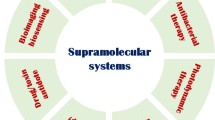Abstract
Organic chemists have long recognized the important role that reaction media play in controlling rates, product distributions and stereochemistry. Recently, much effort has been directed towards the use of organized media to modify reactivity as compared to that in isotropic liquids. Judicious selection of a given organized system for a given application requires sufficient understanding of the properties of the organized media themselves and those of the substrate interactions therein. The multimolecular aggregation of hydrophobic solutes in water could prove to be of immense value to the organic chemist. The aggregation of simple olefinic systems in water, would enable photocycloaddition to compete efficiently with the various other modes of dacay of the short-lived excited state. Investigations of a few systems (dimerization of coumarins, stilbenes and alkylcinnamates), in our laboratory have been successful and they bring to light the significance of the hydrophobic effect. One of the most accepted manifestations of the hydrophobic interactions is probably the formation of micellar aggregates in aqueous solutions. Micelles provide a unique interface between aqueous and non-aqueous phases at which the non-polar solute can orient itself. While intermolecular orientation at micellar interfaces can provide selectivity in dimerization reactions, intramolecular orientation can be utilized to bring about selectivity in unimolecular photo-transformations. Such examples are presented.
Similar content being viewed by others
References
Abraham M H 1982J. Am. Chem. Soc. 104 2085
Ben-Naim A 1980Hydrophobic interactions (New York:Plenum Press)
Berenjian N, de Mayo P, Sturgeon M, Sydnes L K and Weedon A C 1982Can. J. Chem. 60 426
Breslow R, Maitra U and Rideout D C 1983Tetrahedron Letts. 24 1901
Frank H S and Evans M W 1945J. Chem. Phys. 13 507
Grieco P A, Garner P and Zhen-min He 1983aTetrahedron Letts. 24 1897
Grieco P A, Garner P, Yoshida K and Huffman J C 1983bTetrahedron Letts. 24 3807
Grieco P A, Yoshida K and Garner P 1983cJ. Org. Chem. 48 3139
Kleopfer R and Morrison H 1972J. Am. Chem. Soc. 94 255
Lee K H and de Mayo P 1979J. Chem. Soc., Chem. Commun. 493
Muthuramu K and Ramamurthy V 1982J. Org. Chem. 47 3976
Muthuramu K and Ramamurthy V 1984Indian J. Chem. B25 502
Muthuramu K, Ramnath N and Ramamurthy V 1983J. Org. Chem. 48 1872
Otten J G, Yeh C S, Byrn S and Morrison H 1977J. Am. Chem. Soc. 99 6353
Ramesh V and Ramamurthy V 1984aJ. Org. Chem. 49 536
Ramesh V and Ramamurthy V 1984bJ. Photochem. 24 395
Ramnath N and Ramamurthy V 1984J. Org. Chem. 49 2827
Ramnath N, Ramesh V and Ramamurthy V 1985J. Photochem. 31 73
Ramamurthy V 1986Tetrahedron (in press)
Rideout D C and Breslow R 1980J. Am. Chem. Soc. 102 7816
Syamala M S and Ramamurthy V 1986J. Org. Chem. (in press)
Turro N J, Gratzel M and Braun A M 1980Angew. Chem., Int. Ed. Engl. 19 675
von Hippel P H and Schleich T 1969Acc. Chem. Res. 2 257
Wertz D H 1980J. Am. Chem. Soc. 102 5316
Author information
Authors and Affiliations
Rights and permissions
About this article
Cite this article
Devanathan, S., Syamala, M.S. & Ramamurthy, V. Photoreactions in hydrophobic pockets. Proc. Indian Acad. Sci. (Chem. Sci.) 98, 391–407 (1987). https://doi.org/10.1007/BF02861536
Issue Date:
DOI: https://doi.org/10.1007/BF02861536




